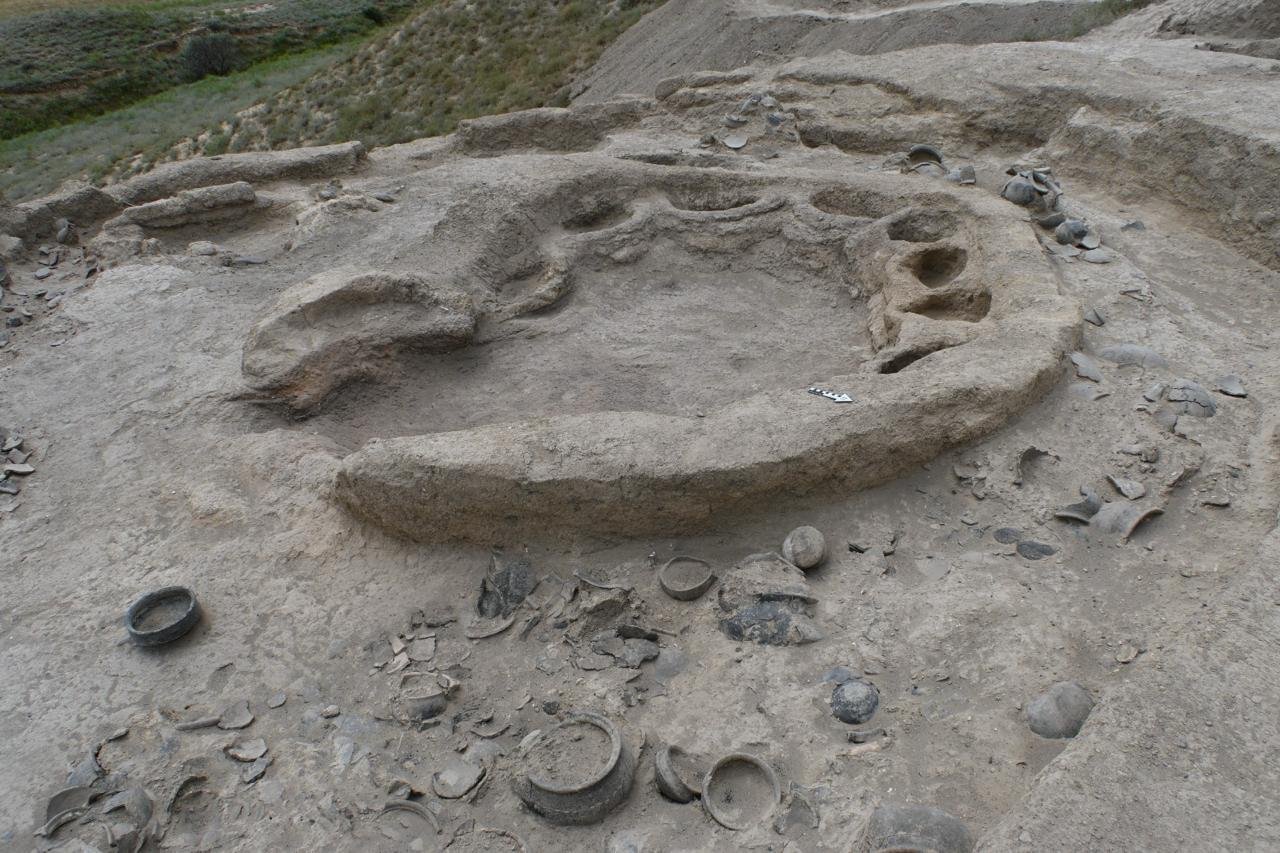Archaeologists have uncovered a remarkable 3,500-year-old ritual table at Tava Tepe, a Late Bronze Age site in the Caucasus region near the borders of Armenia, Georgia, and Azerbaijan.
 The ritual table discovered in Tava Tepe. Credit: University of Catania
The ritual table discovered in Tava Tepe. Credit: University of Catania
The discovery occurred during the fourth excavation mission, made possible by contributions from the Ministry of Foreign Affairs and International Cooperation, the Center for Ancient Mediterranean and Near Eastern Studies of Florence, and in collaboration with the Azerbaijan Academy of Sciences, with the participation of scholars from CAMNES, the University of Catania, the Scuola Superiore di Catania, the School of Specialization in Archaeological Heritage of Syracuse, and the National PhD Program in Heritage Science of the University of Rome La Sapienza.
The excavation led by Professor Nicola Laneri and Dr. Bakhtiyar Jalilov, revealed a concentric circle earthen structure. This structure includes a central kitchen area and a ritual table, with ceramic utensils remaining in their original positions. This structure likely served as a rest stop for nomadic peoples moving between the Kura River basin and the Caucasus mountains between 1500 and 750 BCE, during the Late Bronze Age and Early Iron Age, before they crossed the mountains to move westward.
The central kitchen area at Tava Tepe was a focal point of the discovery. It featured eight hearth installations with traces of fire at their bases, indicating that food was cooked inside numerous ceramic containers scattered across the floor. These included bowls and glᴀsses made of black burnished ceramics, typical of the period.
The kitchen also contained long, flat pebbles, which were likely used to stir the dishes. In one corner of the kitchen, a thick layer of ash was found, ᴀssociated with the use of embers, and clay tokens with fingerprints, which may have served as receipts for obtaining food rations.
The structure was characterized by a monumental entrance with wooden columns and a thatched roof, which likely covered the entire complex. Numerous post holes further emphasized the circularity of the structure, which had a diameter of approximately 15 meters. The exterior of the circular area was marked by a large number of animal bones (cattle, sheep, and pigs) and ceramic pottery deposited as rubbish.
The ritual nature of the site is suggested by the discovery of human figurines placed in votive pits. Additionally, the central drum and entrance of the structure, where the kitchen was located, were sealed with a thick layer of compacted yellow earth and a two-meter-diameter earthen circle filled with a thick layer of ash.
Prof. Laneri explained: “The structure featured a monumental entrance with wooden columns and a thatched roof, likely covering the entire complex. Numerous post holes accentuating the circular design indicate that the structure had a diameter of approximately 15 meters. The deposit represented the remains of meals consumed outside, part of a shared and ritual consumption of meals among members of nomadic communities.”
The archaeologists plan to present additional findings on Tava Tepe at the Naxos Archeofilm, an international archaeological film festival. Prof. Laneri, invited by Gabriella Tigano, director of the Naxos Taormina Park, will discuss the site’s significance and other recent findings from excavation campaigns in the Middle East.
More information: CAMNES l University of Catania





